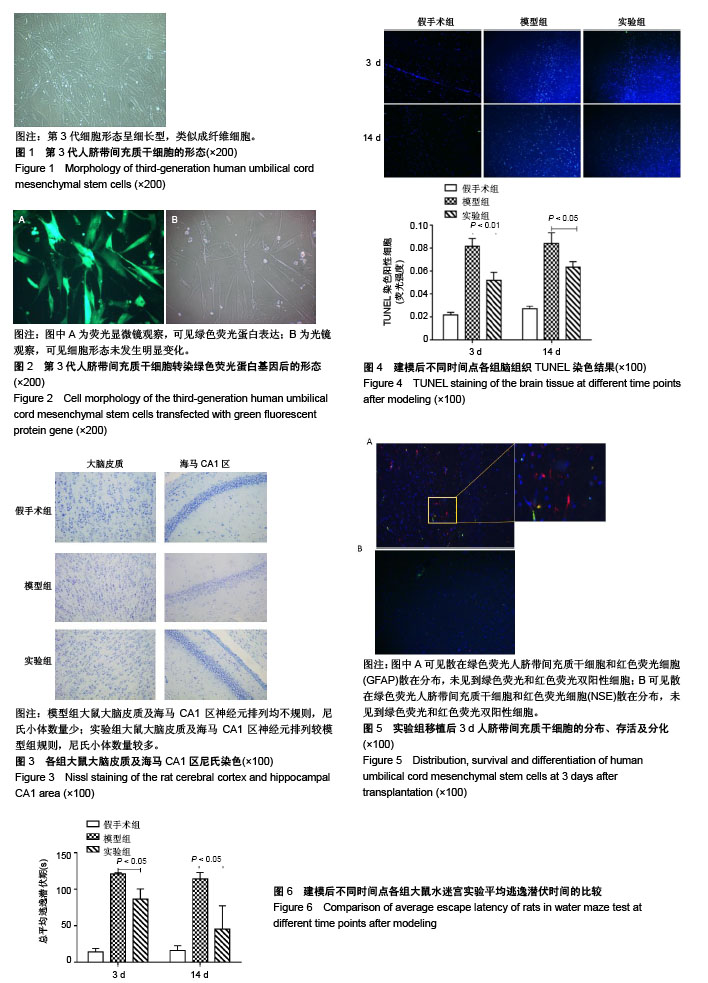| [1] Berger HR,Brekke E,Wideroe M,et al. Neuroprotective Treatments after Perinatal Hypoxic-Ischemic Brain Injury Evaluated with Magnetic Resonance Spectroscopy. Dev Neurosci. 2017; 39(1-4):36-48.[2] McAdams RM,Juul SE.Neonatal Encephalopathy: Update on Therapeutic Hypothermia and Other Novel Therapeutics.Clin Perinatol.2016;43(3):485-500.[3] Oliveira V,Singhvi DP, Montaldo P,et al.Therapeutic hypothermia in mild neonatal encephalopathy: a national survey of practice in the UK.Arch Dis Child Fetal Neonatal Ed.2018;103(4):F388-390.[4] Ding DC,Chang YH,Shyu WC,et al.Human umbilical cord mesenchymal stem cells: a new era for stem cell therapy.Cell Transplant.2015;24(3):339-347.[5] Ahn SY,Chang YS,Park WS.Stem Cells for Neonatal Brain Disorders.Neonatology.2016;109(4):377-383.[6] Sakai T,Sasaki M,Kataoka-Sasaki Y,et al.Functional recovery after the systemic administration of mesenchymal stem cells in a rat model of neonatal hypoxia-ischemia.J Neurosurg Pediatr. 2018; 22(5):513-522.[7] Ma L,Feng XY,Cui BL,et al.Human umbilical cord Wharton's Jelly-derived mesenchymal stem cells differentiation into nerve-like cells. Chin Med J (Engl).2005;118(23):1987-1993.[8] Rice JE,Vannucci RC,Brierley JB.The influence of immaturity on hypoxic-ischemic brain damage in the rat.Ann Neurol.2010;9(2): 131-141.[9] 王立新,李惠平.人脐带间充质干细胞不同移植途径治疗缺血性脑损伤以及生物发光技术示踪的研究及进展[J].中国组织工程研究, 2017, 21(33):5407-5412.[10] Rodriguez-Frutos B,Otero-Ortega L,Gutierrez-Fernandez M,et al.Stem Cell Therapy and Administration Routes After Stroke.Transl Stroke Res.2016;7(5):378-387.[11] Detante O,Rome C,Papassin J.How to use stem cells for repair in stroke patients. Rev Neurol (Paris). 2017;173(9):572-576.[12] Yamashita T,Abe K.[Regenerative therapy for post-stroke patients. Nihon Rinsho.2016;74(4):661-665.[13] Mittal D,Ali A,Md S,et al.Insights into direct nose to brain delivery: current status and future perspective.Drug Deliv.2014; 21(2):75-86.[14] Perets N,Hertz S,London M,et al.Intranasal administration of exosomes derived from mesenchymal stem cells ameliorates autistic-like behaviors of BTBR mice. Mol Autism. 2018; 9:57.[15] van Velthoven CT,Kavelaars A,van Bel F,et al.Nasal administration of stem cells: a promising novel route to treat neonatal ischemic brain damage. Pediatr Res.2010;68(5): 419-422.[16] Patel MM,Patel BM.Crossing the Blood-Brain Barrier: Recent Advances in Drug Delivery to the Brain. CNS Drugs.2017;31(2): 109-133.[17] Thorne RG,Pronk GJ,Padmanabhan V,et al.Delivery of insulin-like growth factor-I to the rat brain and spinal cord along olfactory and trigeminal pathways following intranasal administration. Neuroscience.2004;127(2):481-496.[18] Alexander A, Saraf S.Nose-to-brain drug delivery approach: A key to easily accessing the brain for the treatment of Alzheimer's disease. Neural Regen Res. 2018;13(12):2102-2104.[19] Amer MH,Rose F,Shakesheff KM,et al.Translational considerations in injectable cell-based therapeutics for neurological applications: concepts, progress and challenges. NPJ Regen Med. 2017;2:23.[20] 张琴芬,屠文娟.移植人脐带间充质干细胞治疗缺氧缺血性脑损伤的两种方法比较[J].中国儿童保健杂志, 2015,23(1):35-38.[21] Yu D,Li G,Lesniak MS,et al.Intranasal Delivery of Therapeutic Stem Cells to Glioblastoma in a Mouse Model. J Vis Exp.2017; 124: e55845[22] Galeano C,Qiu Z,Mishra A,et al.The Route by Which Intranasally Delivered Stem Cells Enter the Central Nervous System.Cell Transplant.2018;27(3):501-514.[23] Crowe TP,Greenlee MHW,Kanthasamy AG,et al.Mechanism of intranasal drug delivery directly to the brain.Life Sci.2018;195: 44-52.[24] 范雪,白小红,陈娟,等.脑室内移植hUC-MSCs对缺氧缺血性脑损伤新生大鼠的保护作用[J].四川大学学报(医学版), 2017,48(2): 179-185.[25] Cunningham CJ,Redondo-Castro E,Allan SM.The therapeutic potential of the mesenchymal stem cell secretome in ischaemic stroke. J Cereb Blood Flow Metab.2018;38(8):1276-1292.[26] Li Y,Cheng Q,Hu G,et al.Extracellular vesicles in mesenchymal stromal cells: A novel therapeutic strategy for stroke. Exp Ther Med.2018;15(5):4067-4079.[27] Ferreira JR,Teixeira GQ,Santos SG,et al.Mesenchymal Stromal Cell Secretome: Influencing Therapeutic Potential by Cellular Pre-conditioning.Front Immunol.2018;9:2837.[28] Doeppner TR,Herz J,Gorgens A,et al.Extracellular Vesicles Improve Post-Stroke Neuroregeneration and Prevent Postischemic Immunosuppression. Stem Cells Transl Med. 2015;4(10): 1131-1143.[29] Gu Y,He M,Zhou X,et al.Endogenous IL-6 of mesenchymal stem cell improves behavioral outcome of hypoxic-ischemic brain damage neonatal rats by supressing apoptosis in astrocyte. Sci Rep. 2016;6:18587.[30] Gu Y,Zhang Y,Bi Y,et al.Mesenchymal stem cells suppress neuronal apoptosis and decrease IL-10 release via the TLR2/NFkappaB pathway in rats with hypoxic-ischemic brain damage.Mol Brain. 2015;8(1):65.[31] He M,Shi X,Yang M,et al.Mesenchymal stem cells-derived IL-6 activates AMPK/mTOR signaling to inhibit the proliferation of reactive astrocytes induced by hypoxic-ischemic brain damage. Exp Neurol. 2019;311:15-32. |
.jpg)

.jpg)
.jpg)